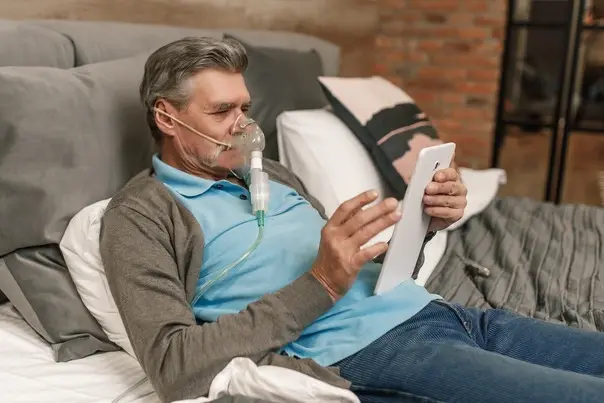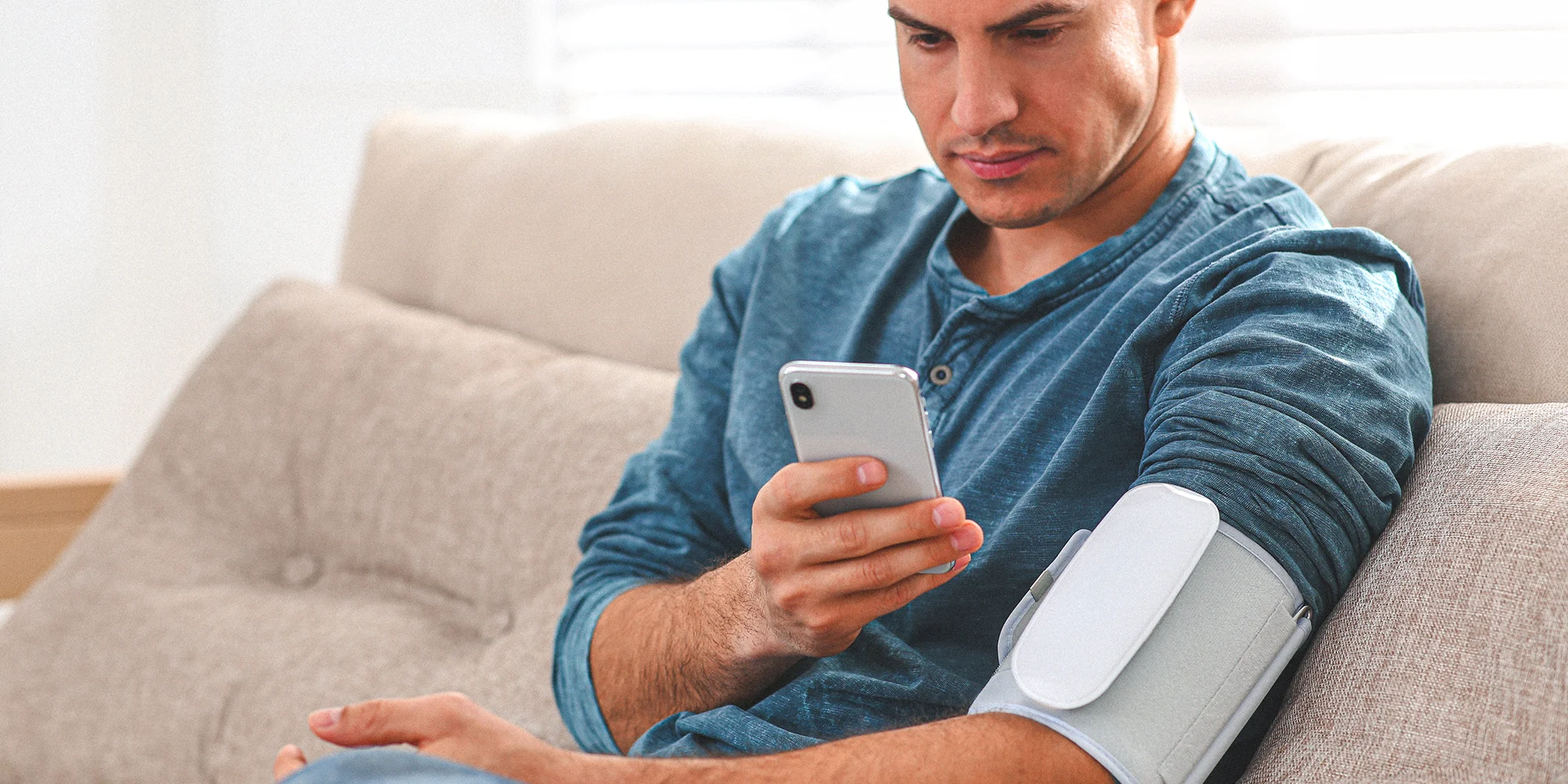An array of advanced technologies, many of them highly sophisticated and traditionally confined to healthcare facilities, are increasingly being used in home environments. What are the implications for OEMs, and how do they leverage these changes?
With mounting pressure on healthcare systems worldwide, patients are increasingly being discharged from hospitals into their own homes to free up resources while still needing care. To support this shift, a diverse range of technologies—many of them highly sophisticated—are being used in homes to empower individuals to take control of their own health, assist others with medical needs, or receive help in managing their conditions.
This transition toward home-based care solutions is transforming the way people interact with healthcare, enabling greater autonomy and flexibility in managing health outside of traditional facilities. But transferring diagnostic instruments into the home has many challenges – not just for users, but also for OEMs – from security to useability to connectivity. Here are just a few considerations:
- simplicity of use
- training required to ensure safe operation
- availability of space and power
- storage and disposal of consumables
- connectivity with care providers and doctors
- high instrument reliability, since servicing is difficult
New challenges and opportunities for home diagnostics
The rise of home diagnostics brings major challenges and opportunities for manufacturers, likely requiring them to rethink and reshape their business models to stay competitive.
As consumers gain more control over easy-to-use diagnostic tools (as well as product maintenance and repairs) OEMs face reduced dependence on traditional service centres, potentially cutting into aftermarket revenue.
This shift also opens up new opportunities. OEMs can develop and sell specialised diagnostic tools, software, or subscription-based services that provide ongoing monitoring and support. This could lead to increased customer loyalty and data-driven product improvements.
Additionally, OEMs may need to focus more on product reliability and user-friendly maintenance, as consumers will be better equipped to identify flaws independently. This development is driving a shift which means OEMs will need to reconsider their product offerings and business models.
We have many manufacturer clients who often turn to 42T when they are short on in-house expertise, resources or time to tackle multifaceted projects with fast-approaching deadlines. These tasks often require specialised knowledge across various fields, and that’s where consultants can provide significant value.
Why is the home healthcare market growing so fast?
The global home diagnostics market was estimated at £4.68 billion ($5.92 billion) in 2022 and is expected to reach £7.80 billion ($9.87 billion) by 2032.
In the US, up to $265 billion worth of care services for Medicare fee-for-service and Medicare Advantage beneficiaries could shift to the home by 2025.
There are a number of factors contributing to this incredible growth rate, including the ageing population and the ever-increasing demand on healthcare services, especially in the aftermath of the pandemic. Soaring costs and shortages of nurses and other skilled personnel have piled on the pressure to provide more care on an outpatient basis.
Other factors include the rise in demand for early disease detection and diagnosis, and availability of personalised medicine, plus the growth in prevalence of various lifestyle-associated and infectious diseases.
An ageing population
Today in the UK there are almost 11 million people aged 65 and over, equalling 19% of the population. This will increase to almost 13 million people in 10 years or 22% of the population. Similarly, in the US there are currently around 62 million people aged 65 and older, accounting for 18% of the population. This is estimated to rise to 23% by 2054.
Older people require more extensive and complex healthcare services. As they are less mobile, it is more practical and convenient to receive treatment at home, rather than travel to healthcare centres.

Many older people have multiple chronic conditions, where treatment is very conducive to home healthcare, and recent studies have shown that these patients have better health outcomes and incur lower costs compared to inpatient care.
What home diagnostics are already available?
Diagnostic tests
Home diagnostic tests are popular among patients because they are quick, convenient, cost-effective, and confidential. They are particularly useful for vulnerable patients who cannot attend an in-person appointment. And growing demand means these tests are available in supermarkets and pharmacies, both instore and online.
The five tests that held the largest home diagnostics market share in 2023 were: glucose monitoring, pregnancy, HIV/STI, ovulation prediction, and cholesterol. Other popular home diagnostic tests include colorectal cancer screening and HbA1c monitoring.
Medical devices
These can include anything from tiny wireless devices to massive machines. Some medical devices have been used in the home for many years, while other devices are just beginning to migrate there as emergent technologies present new opportunities for remote healthcare management.
There are various types of monitors and meters to measure health status indicators, such as blood pressure or blood coagulation for people taking blood thinning medications.
How AI can support home diagnostics
Artificial intelligence can enhance the quality of remote healthcare by utilising technologies like image recognition, natural language processing, and machine learning. For instance, AI can aid telemedicine by offering real-time insights during patient consultations conducted from home.
Additionally, AI makes it possible to monitor patients with chronic conditions such as heart disease, diabetes, and asthma by collecting and analysing data from wearable devices, allowing for better long-term management of these illnesses.
The challenges of moving from healthcare facilities to the home
Home environments vary considerably and can present a range of complexities for introduction of medical devices, such as:
- Crowded or cluttered rooms, carpeting or stairs may hinder device portability or manoeuvrability
- Low lighting levels may make it hard to see device displays and controls
- High noise levels may make it difficult to hear device prompts and alarms
- Temperature may be too high or too low, causing equipment or consumables to overheat or stall
- Humidity may be too high, causing condensation, or too low, producing static electricity

All home caregivers must be adequately trained to use and maintain the medical devices that they will use in the home. Training should be provided in multiple formats, in addition to clear device labelling, with access to ongoing support, ideally available 24 hours a day, 365 days a year.
Useability improvements with a clear focus on the home user profile can go a long way towards mitigating risks of incorrect use and wider deployment and adaptation.
It’s also important to consider that not all medical devices stay at home. People may need to take their device with them to their workplace. This situation has implications for device portability and appearance, particularly with regard to discretion. People may also take their device with them when they travel, meaning battery life and durability are key.
Home diagnostics going forward
There are still many questions to answer around the future of home diagnostics, from the estimated demand for different types of products, to upcoming industry applications and trends. But the rapidly ageing population, increasing demand on healthcare services, and the preference of many patients to be treated at home, inevitably means more people will use medical and diagnostic devices at home.
Home environments vary widely and can have a significant impact on how safe a device is in the home, and must be considered for people receiving home healthcare.
These environments also vary in the quality and accessibility of utilities, the amount of space available, light and noise levels, temperature and humidity levels, and occupants, which may include children and pets. All these factors can have a significant impact on how safe a device is in the home and must be considered for people receiving home healthcare.
In addition, it is important for manufacturers to design out hazards rather than just add warning labels or rely on training to address problems. Users would be better served if devices were designed to be more error-resistant, so easier to understand and operate as well as more fail-safe, irrespective of labels, instructions, or training.
Manufacturers should focus on eliminating hazards through design improvements. Devices would benefit users more if they were created to be inherently safer and more intuitive to use, minimizing the risk of errors regardless of the presence of labels, instructions, or training.
Partnering on diagnostics product development
“As specialists in product development, our team has successfully helped OEMs identify new technology, or adapt their current offerings, ensuring their products remain competitive in this particularly fast-changing market. Significantly, we have cross-industry expertise all under one roof which many manufacturers don’t easily have access to,” says Matthias.
“Our teams at 42T create cutting-edge diagnostic solutions, user-friendly software, and data-centric platforms aimed at improving product reliability and enhancing the customer experience. Our approach helps bring new innovations to market faster, giving original equipment manufacturers a competitive advantage in utilising home diagnostic technologies.”
We offer a comprehensive range of services:
- World leading, multi-disciplinary and experienced teams
- Process invention and thought leadership
- Short or long-term access to project resource to fit budget
- Excellent root-cause analysis to solve issues, enhance processes and equipment
- Costing analyses
- Advice on Industry 4.0 – from AI to machine learning
- Due diligence and investment assessment
Contact us to explore how we could support the redesign of your diagnostic devices to help address the challenges around the change in environment, useability, and performance requirements in the homecare diagnostics market.
As leading product development consultants, the 42T Healthcare and Life Sciences team is committed to pioneering medical advancements through our expertise in solving complex technical challenges for healthcare manufacturers.
